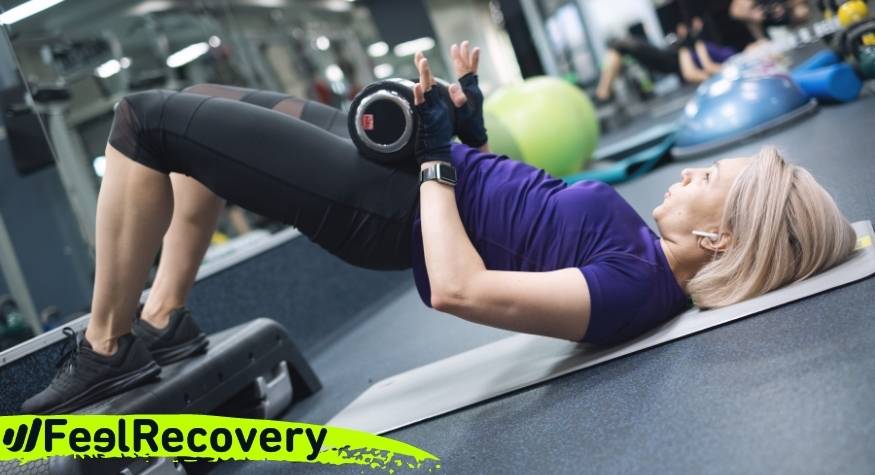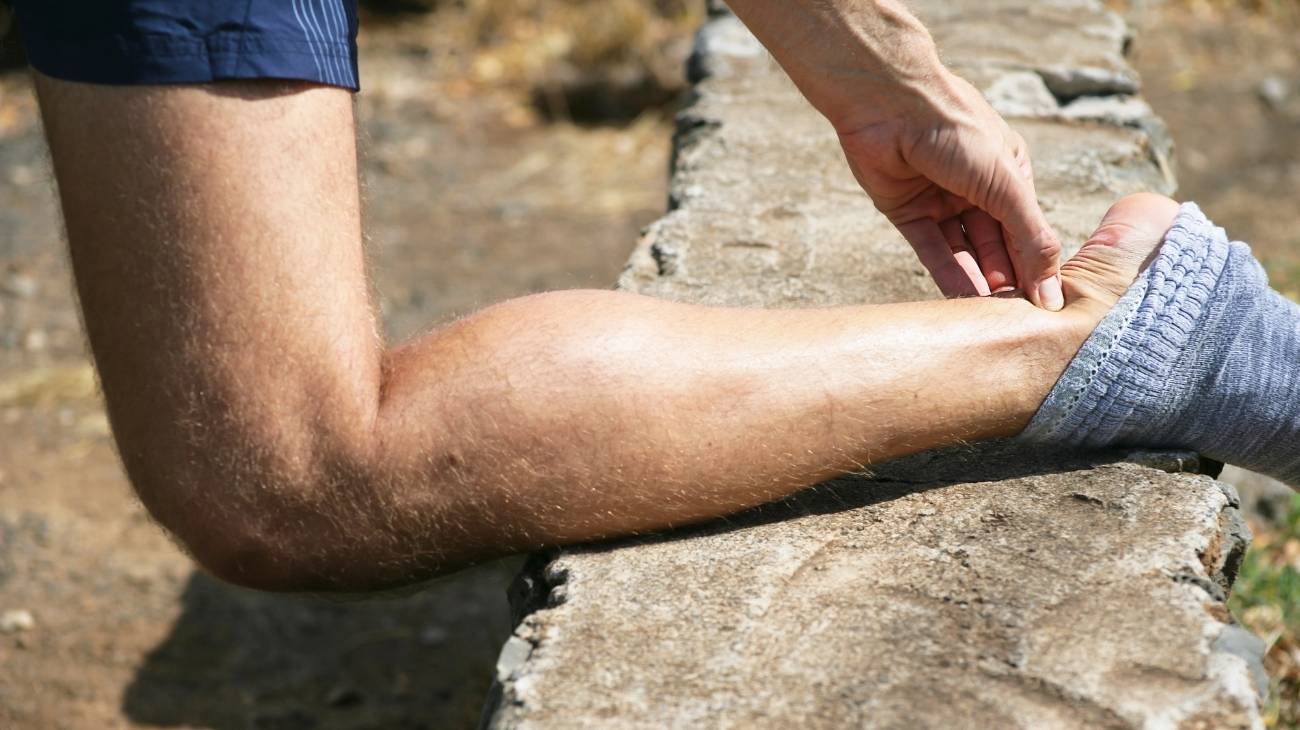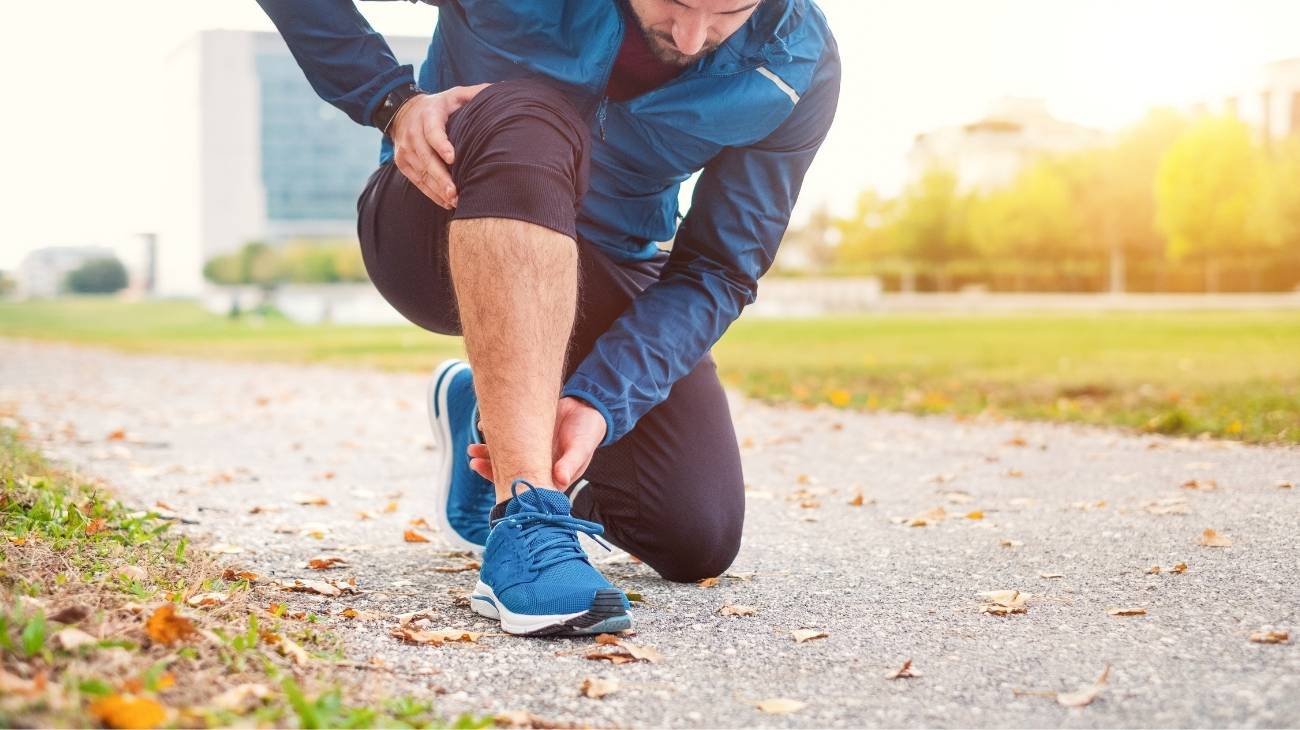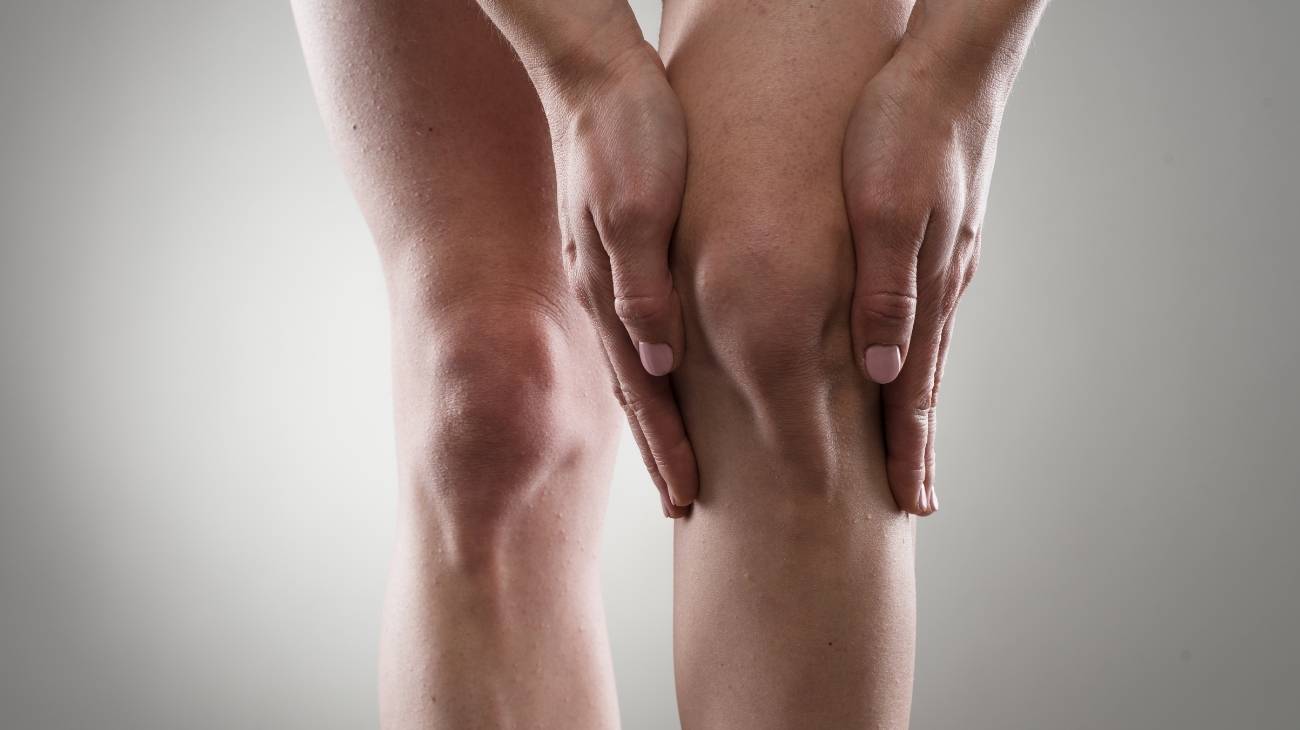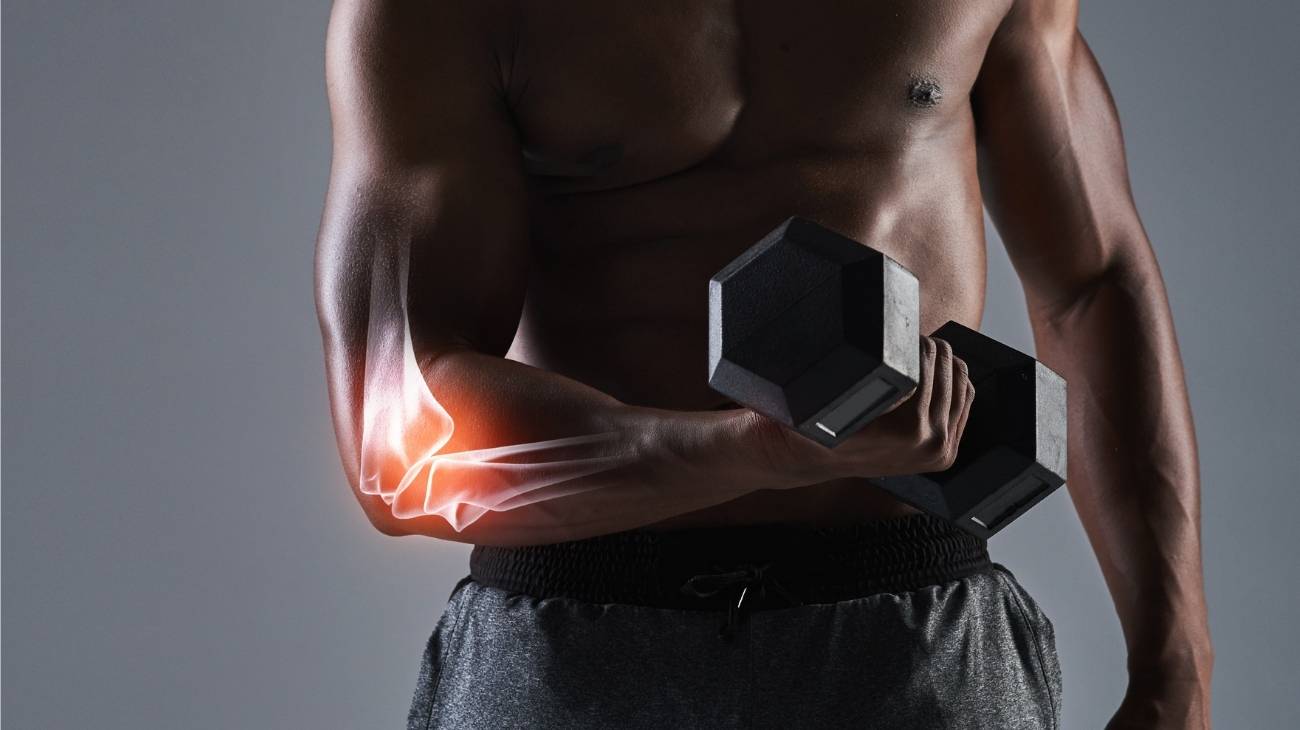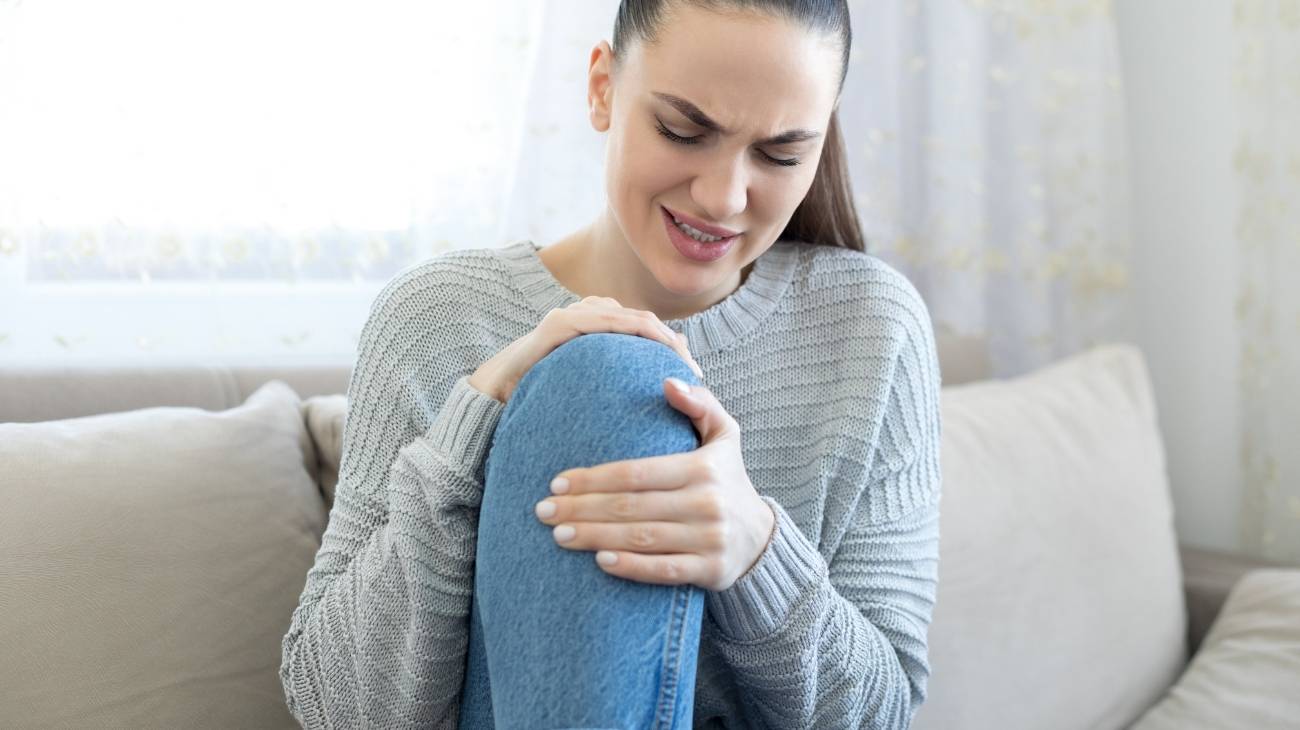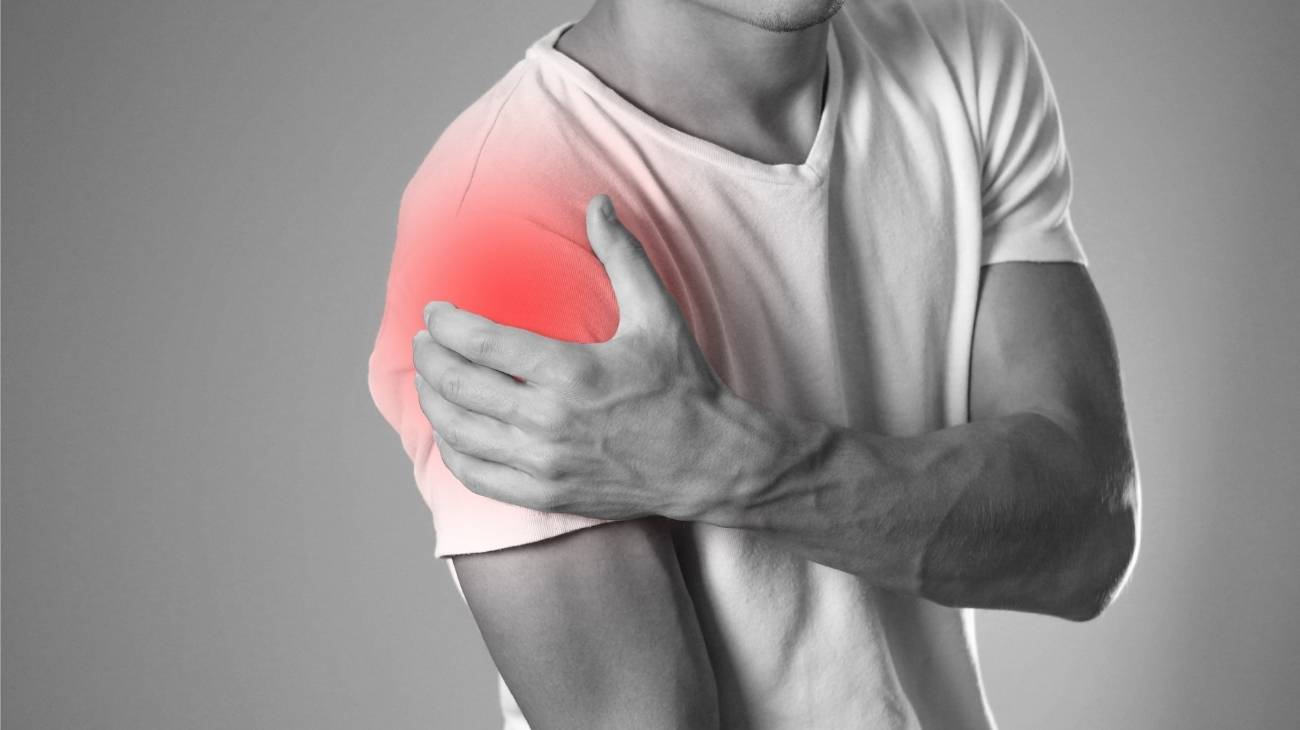If you want to know what gluteal or hip tendonitis is all about, you will have to read the following paragraphs of this post. We will explain in a simple way why this tendon injury occurs and what are the signs that will warn you of the presence of a tendinopathy in the hip.
Pay attention to all the details because we will also talk about the treatments and complementary therapies that are currently applied to combat the symptoms of inflammation in the gluteal tendons. Finally, you will be able to read the best tips to help you avoid hip tendonitis. Let's get started.
What is hip tendonitis or gluteal tendonitis?
Around the hip are the gluteus maximus, gluteus medius and gluteus minimus tendons which connect the gluteal muscles to the pelvis and other bones. When there are microscopic ruptures in the tendon fibres mentioned above, especially in the gluteus medius and gluteus minimus, an inflammation is generated which results in the name of gluteal tendonitis.
This injury may be caused by a lack of proper blood supply to the hip area, which leads to an inefficient exchange of gases and liquids between the blood and the tissue. This leads to the appearance and accumulation of metabolites. Another common reason why a person suffers from hip tendonitis is due to overexposure and exaggerated demand on this area of the body for repetitive movements.
What are the causes and risk factors for hip tendonitis?
See below the factors that cause inflammation in the gluteal muscles of the hip
- Lack of warm-ups prior to the activity: The absence of exercises with gradually progressing levels of complexity is one of the most common causes of hip tendinitis. This is because the muscles and tendons are not prepared for the activity, so the degree of demand is very high from the first movement.
- Blows and trauma: Injuries to the gluteal tendons can lead to microscopic rupture of the tendon fibres. This is an important cause of inflammation of these tissues.
- Improper posture during the daily routine: Sitting improperly, performing force incorrectly or lifting heavy objects can cause stretching of the muscles and lead to hip tendon injuries.
- Excess body weight: Obesity also puts constant stress on the hip tendons, leading to inflammation and pain when the hip joint needs to be moved.
- Lack of a balanced diet: Diet is essential to maintain the proper functioning of the tendon structure. If there is a lack of potassium, magnesium and vitamins in the body, the likelihood of injury to the gluteal muscles is high.
- Advanced age of the patient: Loss of elasticity in the muscles as the years go by can cause injury to the tendons found in the hip. This will make gluteal tendonitis appear more easily.
- Bone deformities: Congenital spurs or malformations are risk factors that can lead to gluteal tendonitis.
Best products for hip tendonitis
Bestseller
-
Acupressure Mat and Pillow (Black/Gray)
$49.95 -
Acupressure Mat and Pillow (Green/Navy)
$49.95 -
Acupressure Mat and Pillow (Pink/Bordeaux)
$49.95 -
Acupressure Pillow (Black/Gray)
$29.46 -
Acupressure Pillow (Green/Navy)
$29.46 -
Acupressure Pillow (Pink/Bordeaux)
$29.46 -
Back Support Belt (Black)
$34.95 -
Back Support Belt (Green)
$34.95 -
Back Support Belt (Pink)
$34.95 -
Heating Pad for Microwave Classic Bottle Shaped (Hearts)
$19.95 -
Heating Pad for Microwave Classic Bottle Shaped (Oxford)
$19.95 -
Heating Pad for Microwave Classic Bottle Shaped (Sport)
$19.95 -
High Density Foam Roller for Muscle (Black/Gray)
$29.95 -
High Density Foam Roller for Muscle (Green/Navy)
$29.95 -
High Density Foam Roller for Muscle (Pink/Bordeaux)
$29.95 -
Ice Massage Roller Ball (Black)
$39.95 -
Ice Massage Roller Ball (Green)
$39.95 -
Ice Massage Roller Ball (Pink)
$39.95 -
Microwave Heating Pad for Back Pain Relief (Extra Large) (Hearts)
$29.95 -
Microwave Heating Pad for Back Pain Relief (Extra Large) (Oxford)
$29.95 -
Microwave Heating Pad for Back Pain Relief (Extra Large) (Sport)
$29.95 -
Microwave Heating Pad for Neck & Shoulder Pain Relief (Hearts)
$24.95 -
Microwave Heating Pad for Neck & Shoulder Pain Relief (Oxford)
$24.95 -
Microwave Heating Pad for Neck & Shoulder Pain Relief (Sport)
$24.95 -
Microwaveable Heating Pad for Pain Relief (Hearts)
$19.95 -
Microwaveable Heating Pad for Pain Relief (Oxford)
$19.95 -
Microwaveable Heating Pad for Pain Relief (Sport)
$19.95 -
Pack 2 In 1 Foam Roller High + Soft Density (Black/Gray)
$29.95 -
Pack 2 In 1 Foam Roller High + Soft Density (Green/Navy)
$29.95 -
Pack 2 In 1 Foam Roller High + Soft Density (Pink/Bordeaux)
$29.95 -
Sacroiliac Support Belt (Black)
$24.95 -
Sacroiliac Support Belt (Green)
$24.95 -
Sacroiliac Support Belt (Pink)
$24.95 -
Soft Density Foam Roller for Recovery (Black)
$29.95 -
Soft Density Foam Roller for Recovery (Green)
$29.95 -
Soft Density Foam Roller for Recovery (Pink)
$29.95 -
Trigger Point Massage Stick (Black)
$14.95 -
Trigger Point Massage Stick (Green)
$14.95 -
Trigger Point Massage Stick (Pink)
$14.95
Main symptoms that warn us of hip tendonitis
It is possible to determine a hip tendon injury by looking at the following signs and symptoms
- Inability to walk: Gluteal tendonitis can limit movement in the legs and lower back area. This is due to the involuntary attention that the muscles and tendons may have.
- Swelling in the area: It is common to find swelling in the lumbar part of the spine as well as under the buttocks. This is caused by the large amount of blood pooling in the area due to poor circulation caused by this type of injury.
- Pain: Patients with hip tendonitis feel sharp pain in the back, legs, knees and hip area. The nerve roots are being pressed by the inflammation, which causes a rather sharp painful sensation.
- Reddening of the epidermis: The lack of dilatation can cause the skin colour to be affected, resulting in a reddish colour in the affected area.
- Bulging: It is common to find lumps in this gluteal tendinopathy caused by the attention suffered by the tendons.
- Discomfort when sleeping: This is not only reflected in bed but also in the early hours of the morning, as the patient feels a general discomfort in the legs and hips.
What treatments are available to improve and cure hip tendonitis?
Nowadays there are different types of therapies that help to improve the symptoms caused by hip tendonitis. That's why we'll show you which ones are the most popular with doctors.
Alternative and complementary therapies
Take a look at the complementary therapies that are used to treat gluteal tendonitis:
- Hot and cold therapy: It is possible to treat hip tendinitis by applying hot and cold baths as well as gels and water packs to the affected area. This will considerably dilate the blood vessels, causing a better blood supply, which will lead to a decrease in inflammation and pain. On the other hand, low temperatures help to reduce the sustained pressure on the nerves in this part of the body.
- Compression therapy: This therapy consists of applying elastic bands to the lower back, although it must be taken into account if the injury has occurred in the gluteus maximus tendons. On the other hand, if the inflammation is in the gluteus medius and lower back, compression back belts can be applied to the hips. The aim of this treatment is to keep the hip immobilised for as long as possible so that the tendons receive the correct blood flow and thus reduce inflammation and pain.
- Massage therapy: By rubbing and tapping on the lower back and buttocks area, it is possible to cause internal heat in the tendon fibres. This helps the capillary walls to exchange gases and nutrients via the venules and arterioles so that the tissues can eliminate all the waste products they contain and thus reduce the symptoms of tendinopathy.
- Acupressure therapy: To undergo this type of alternative treatment it is necessary to consult a doctor beforehand. The therapy consists of impressing different areas or points of reference on the body through the palms and fingers of the physiotherapist. It should be borne in mind that the aim of this treatment is the relaxation and emotional balance of the patient.
- Thermotherapy: Unlike hot and cold therapy, thermotherapy uses only the benefits of warm temperatures. In this way it is possible to stimulate the capillary walls so that the venules and arterioles act on the buttocks, causing the elimination of residues lodged in the tendon fibres. It can be applied by means of gels, hot water bottles or warm handkerchiefs; always bearing in mind that the temperature should not be excessive because it could cause epidermal lesions.
- Natural remedies using plants: It is possible to control the effects of gluteal tendonitis through the use of medicinal plants. These herbs have components that allow the patient to relax, as well as having analgesic and anti-inflammatory effects. For this reason, it is advisable to visit the doctor before ingesting infusions or taking baths on the affected area. Rosemary, thyme, basil and lavender are among the most popular herbs for this type of injury.
- Healthy lifestyle habits: The therapy consists of consulting a doctor to gradually teach different re-education techniques. This will not only help to reduce the symptoms of gluteal tendinitis, but will also help to avoid new injuries in this area of the body. Among the objectives set out in this treatment are correct posture, exercise practices and improving eating habits.
Dietary supplements
It is possible that the onset of hip tendonitis is caused by a lack of micronutrients, which is why the doctor often recommends the use of dietary supplements. In the form of tablets, liquids or powders, the patient ingests omega 3, vitamins and mineral salts. This helps to improve the function of the tendons and to eliminate the molecules lodged in the tendon fibres.
Physiotherapy treatments
The physiotherapist seeks to generate internal heat within the tendon fibres located in the hip. This improves the blood supply which leads to a decrease in inflammation and pain and an increase in the exchange of nutrients between the blood and the tissues.
There are different techniques that can be applied to perform rehabilitation exercises, which should be repetitive and of short duration. Among the most commonly used techniques are hydrotherapy, ultrasound, electrotherapy, laser therapy and radiofrequency.
Medications
Hip tendinopathy can be treated with non-steroidal anti-inflammatory drugs and opioid analgesics. In this way, symptoms of inflammation and pain can be reduced by acetylsalicylic acid, ibuprofen and paracetamol. The dosage and time of application of this therapy should be directed by the acting physician. This means that self-medication should never be practised due to the serious consequences of this type of action.
Surgeries
In cases where gluteal tendinopathy has advanced, the condition can be treated by surgery on the greater trochanter to remove tissue debris and suture the tendon fibres that were injured by overuse of the hip. Obviously these cases are not the most common and in the case of having to resort to surgery, tendonitis is usually accompanied by other previous ailments.
Prevention for gluteal tendon inflammation
If you are looking to prevent inflammation of the tendons located in the hip, read on because we will explain how it can be avoided
- Avoid repetitive movements: This type of action can cause a greater demand on the tendons of the buttocks. For this reason, it is advisable to avoid this type of activity to prevent the appearance of injuries to the tendon tissues. However, if for some reason you need to do these activities, don't forget to rest every few days and warm up beforehand.
- Incorporate a nutrient-rich diet into your life: One of the most effective ways to prevent gluteal tendonitis is to eat omega-3 and foods that are low in fat and uric acid on a daily basis.
- Control your body weight: Overweight and obesity are very important risk factors that can lead to hip tendonitis due to the strain on the tendons. For this reason, maintaining an ideal weight will help you avoid inflammation in this tendon structure.
- Correct body posture: Maintaining a correct body position when performing daily activities helps to avoid hip tendon injuries.
- Avoid heavy lifting: Lifting heavy objects, especially from the floor, can cause significant injury to the tendon fibres of the gluteal hamstrings. Therefore, it is advisable to avoid this type of tasks or to help yourself with elements that will improve your strength.
- Don't sit for long periods of time: The fact that we spend all day working at the computer forces us to spend a lot of time in a seated position, this will produce a lot of pressure on the spine and hips and will favour the loss of muscle tone and shortening of the tendons.
- Hip extension exercises: In order to have good muscles in the gluteus and hip area, it is recommended to do strengthening exercises so that our muscles act as protection and always have good muscle tone. A recommended exercise is the hip thrust or hip extension.
- Visit the doctor: Going to the doctor for general tests will help you avoid tendonitis because it will be possible to detect any micro-tears in the tendons in time.
References
- Allison, K., Vicenzino, B., Wrigley, T. V., Grimaldi, A., Hodges, P. W., & Bennell, K. L. (2016). Hip Abductor Muscle Weakness in Individuals with Gluteal Tendinopathy. Medicine and science in sports and exercise, 48(3), 346-352. https://europepmc.org/article/med/26418561
- Fearon, A., Neeman, T., Smith, P., Scarvell, J., & Cook, J. (2017). Pain, not structural impairments may explain activity limitations in people with gluteal tendinopathy or hip osteoarthritis: a cross sectional study. Gait & Posture, 52, 237-243. https://www.sciencedirect.com/science/article/abs/pii/S0966636216306890
- Grimaldi, A., Mellor, R., Hodges, P., Bennell, K., Wajswelner, H., & Vicenzino, B. (2015). Gluteal tendinopathy: a review of mechanisms, assessment and management. Sports Medicine, 45, 1107-1119. https://link.springer.com/article/10.1007/s40279-015-0336-5
- Allison, K., Salomoni, S. E., Bennell, K. L., Wrigley, T. V., Hug, F., Vicenzino, B., ... & Hodges, P. W. (2018). Hip abductor muscle activity during walking in individuals with gluteal tendinopathy. Scandinavian Journal of Medicine & Science in Sports, 28(2), 686-695. https://onlinelibrary.wiley.com/doi/abs/10.1111/sms.12942
- Tibor, L. M., & Sekiya, J. K. (2008). Differential diagnosis of pain around the hip joint. Arthroscopy: The Journal of Arthroscopic & Related Surgery, 24(12), 1407-1421. https://www.sciencedirect.com/science/article/abs/pii/S0749806308005136
- Millar, N. L., Silbernagel, K. G., Thorborg, K., Kirwan, P. D., Galatz, L. M., Abrams, G. D., … & Rodeo, S. A. (2021). Tendinopathy. Nature reviews Disease primers, 7(1), 1. https://www.nature.com/articles/s41572-020-00234-1
- Rees, J. D., Maffulli, N., & Cook, J. (2009). Management of tendinopathy. The American journal of sports medicine, 37(9), 1855-1867. https://journals.sagepub.com/doi/abs/10.1177/0363546508324283
- Maffulli, N., Wong, J., & Almekinders, L. C. (2003). Types and epidemiology of tendinopathy. Clinics in sports medicine, 22(4), 675-692. https://www.sportsmed.theclinics.com/article/S0278-5919(03)00004-8/fulltext
- Riley, G. (2008). Tendinopathy—from basic science to treatment. Nature clinical practice Rheumatology, 4(2), 82-89. https://www.nature.com/articles/ncprheum0700
- Xu, Y., & Murrell, G. A. (2008). The basic science of tendinopathy. Clinical orthopaedics and related research, 466, 1528-1538. https://link.springer.com/article/10.1007/s11999-008-0286-4



























































